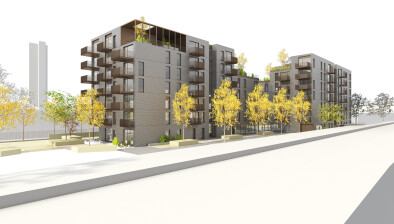Scotland’s residential development land market outperforms London
Housing land values showed small signs of growth in the first quarter of 2019, with the Midlands and Scotland continuing to outperform London and wider South East, according to latest analysis from Savills residential development land index.

Ben Brough
UK greenfield and urban land both saw small increases in land value in the first quarter of 2019, both grew by 0.2 per cent, bringing annual growth to 1.3 per cent and 1.8 per cent respectively.
However, the land market remains relatively robust in much of the country. The number of sites sold in the Midlands, North, Scotland and South Wales is in line with, or above, 2018 levels according to the latest analysis from the Savills residential development land index.
Ben Brough, Savills head of development in Scotland, said: “While land values were stable nationally, and fell in London, Scotland outperformed the national average in terms of growth, with values increasing by 0.5 per cent in the first quarter of this year. Value growth in Scotland was led by greenfield sites across Greater Glasgow and small sites in Aberdeen, where transactional activity is returning. Meanwhile, urban land value annual growth continued in the hubs of Edinburgh and Glasgow. This reflects house price growth, underpinned by strong economies and demand exceeding supply. The most sought after land continues to be oven-ready, smaller city centre sites and straightforward medium sites (c100-150 units) on the edge of urban centres.”
Underlying market uncertainty, slowing sales rates and the Government’s plan to end the Help to Buy scheme in England after March 2023 means there is less appetite for risk, particularly in London where values remain suppressed. As well as being selective about the sites they buy, housebuilders are increasingly making use of their established pipeline – on average the listed housebuilders have 4.5 years’ worth of immediate land and are sourcing almost a third of that land from their strategic pipelines.
Dr Lucy Greenwood, Savills research analyst, said: “We are seeing clear evidence that there is risk management among housebuilders. They are using their own longer term land pipelines alongside purchasing immediate sites. They have built up these pipelines since recovering from the global financial crisis, enabling them to increase the number of homes they build each year.”
Some housebuilders are also re-planning sites to include an increased amounts of smaller units, anticipating the changes to the Help to Buy scheme from 2021 with new caps and for first time buyers only, which will run until March 2023.
Housing associations (HAs) continue to be active in the development land market and are bidding competitively for sites in London and across England, the report finds.
Greater clarity around grant funding and the strategic partnerships programme have given HAs confidence for the long term against the a wider market backdrop of uncertainty.
Dr Greenwood added: “The £3 billion of funding for the Affordable Homes Guarantee Scheme and the strategic partnership grant programme have provided the sector with some clarity over the longer term and means they are less reliant on cross subsidy, enabling them to deliver more social rented homes.”
According to the NHF quarterly Supply Survey for Q4, 2018 social rent starts were up by almost half (48%) compared to the same quarter last year.














